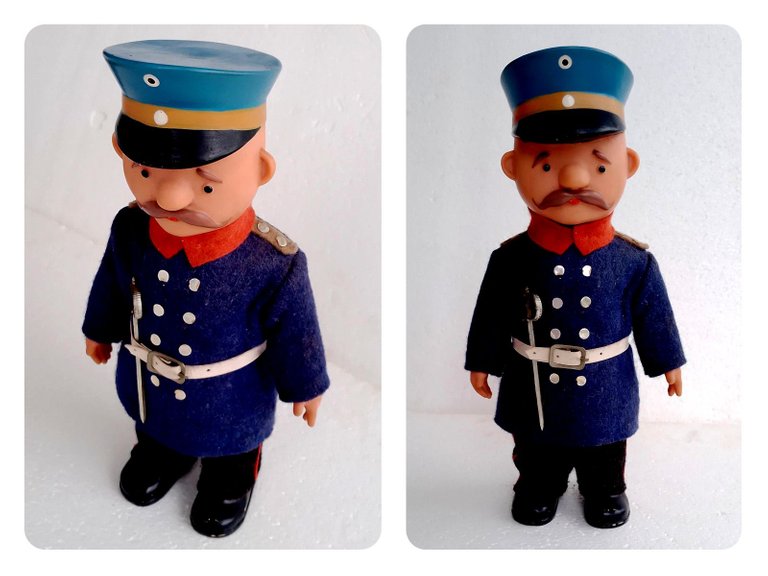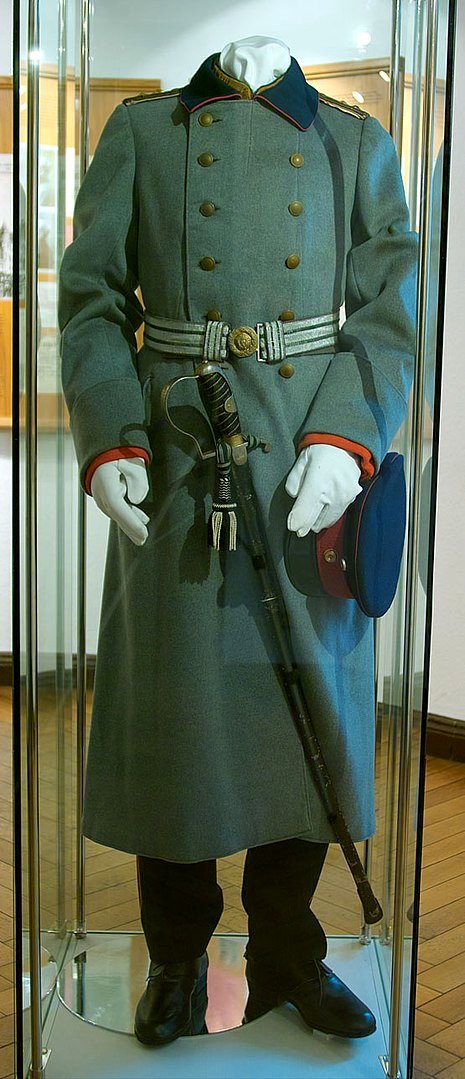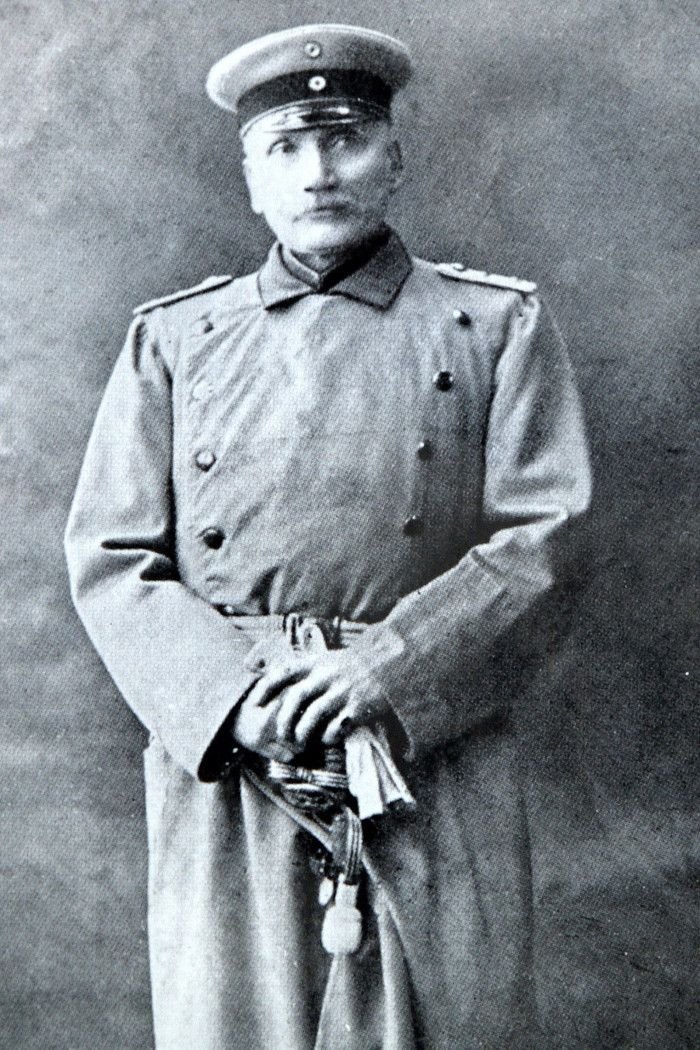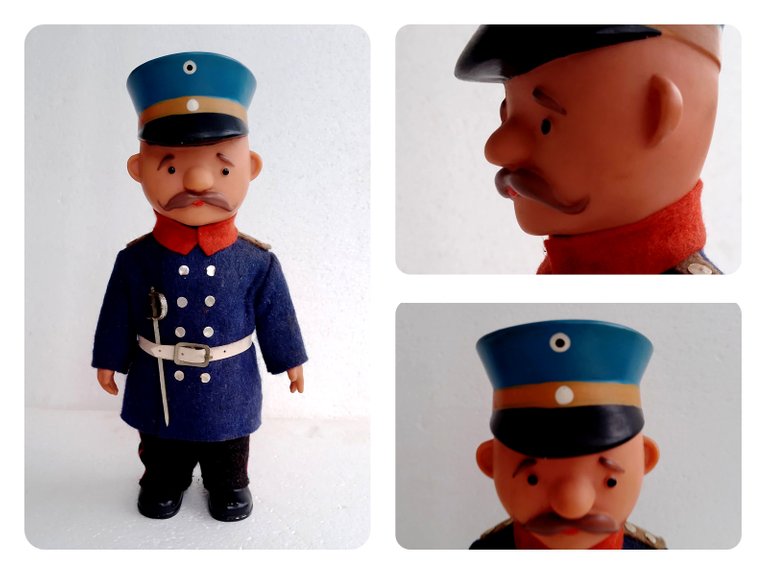
Hoy siento la gran satisfacción de desarrollar este contenido, acerca de este famoso muñeco de origen alemán, réplica de un señor de oficio zapatero, llamado Friedrich Wilhelm Voigt, nacido el año 1849, en la ciudad de Tilsit y popularmente conocido en Alemania como el Capitán de Köpenick.
La historia que ahora les contaré viene a colación, gracias al aumento de la cantidad de muñecos de la colección Las muñecas de Malú, ¡sí, esa misma! la que recibí hace algunos días y de la cual les comenté, en una publicación que hice recientemente para la comunidad Family & Friends.
Pues ahora les digo, que mi cuñada me acaba de dar la gran sorpresa de regalarme otros muñecos que habían quedado rezagados, entre los cuales está, el que hoy ocupa mi atención para la realización de esta publicación.
Se trata de un muñeco muy especial, porque fue una de las primeras piezas o quizás la primera, con la cual Malú inició su impresionante colección, a mediados del año 1970. Cuando la familia estaba recién llegada a Berlín, para ese momento, ninguno tenía ni la menor idea de la magnitud que con el tiempo alcanzaría esa colección.


Es un muñeco fabricado en goma, de 25 cm de estatura, con las facciones y porte del señor Friedrich Wilhelm Voigt, vestido impecablemente con un traje estilo militar, elaborado en tela de fieltro, con una correa en semi cuero y una espada metálica colocada en la cintura. El gran atractivo de estos muñecos, es el fascinante nivel de detalle, con el cual son elaborados y ornamentados. A mí particularmente me cautivan y me puedo pasar horas nada más que contemplándolos.

En el año 1906, este personaje de oficio zapatero, disfrazado con un uniforme muy parecido al que usaba el ejército alemán, tuvo la osadía de hacerse pasar por capitán, controlar bajo engaño a una pequeña tropa de soldados, a quienes, dio instrucciones de tomar el edificio del Ayuntamiento de Köpenick, arrestar al alcalde de turno, así como ordenar que trasladaran al alcalde hacia otro lugar. Mientras tanto, Friedrich Wilhelm Voigt o mejor dicho el Capitán de Köpenick dentro del edificio del Ayuntamiento, se dirigió al área donde guardaban el tesoro público, robó todo el dinero que para ese momento guardaban allí y desapareció llevándose semejante botín.

Ese acto lejos de ser repudiado por la prensa local, fue exaltado y festejado como una gran hazaña y de la misma manera, fue tomado por el pueblo, quienes convirtieron al personaje en todo un héroe. Quizás por haber sido capaz de burlar aquel autoritario régimen, represivo e impenetrable, que mantenía a la población sometida.
Al poco tiempo, después de una intensa busqueda el Capítán de Köpenick fue apresado y condenado a prisión, pero tuvieron que indultarlo antes de que concluyera la condena, por la presión social ejercida por el pueblo.

Más adelante, en el año 1936, se hizo el montaje de la obra teatral El Capitán de Köpenick de Carl Zuckmayer, basada en el episodio de la toma del Ayuntamiento de Köpenick por el Capitán, posteriormente hicieron varias adaptaciones hasta la realización de más de una decena de películas. De la misma manera comenzaron a fabricar y vender el muñeco, que se convirtió en un éxito de ventas en toda Alemania.
Hasta aquí llego con esta publicación, espero que les haya gustado. Me despido hasta una nueva oportunidad en que les traiga la historia y referencia de otro de los muñecos de la colección.

Todas las fotografias del muñeco Capitan de Köpenick son de mi propiedad tomadas con un celular Samsung A03. Los collages fueron elaborados con la aplicación Polish
English

Today I feel the great satisfaction of developing this content, about this famous doll of German origin, replica of a gentleman of shoemaker trade, called Friedrich Wilhelm Voigt, born in 1849, in the city of Tilsit and popularly known in Germany as the Captain of Köpenick
The story I'm going to tell you now comes to you,The story that I will now tell you comes to light, thanks to the increase in the number of dolls in the collection The Dolls of Malú, yes, that same one! the one I received a few days ago and of which I told you about in a post I recently made for the Family & Friends community.
Well, now I tell you that my sister-in-law has just given me the great surprise of giving me other dolls that had been left behind, among which is the one that today occupies my attention for the realization of this publication.
This is a very special doll, because it was one of the first pieces, or perhaps the first, with which Malú began her impressive collection in the mid-1970s. When the family had just arrived in Berlin, at that time, none of them had the slightest idea of the magnitude that this collection would eventually reach.


It is a doll made of rubber, 25 cm tall, with the features and demeanor of Mr. Friedrich Wilhelm Voigt, impeccably dressed in a military style suit, made of felt fabric, with a semi leather belt and a metal sword placed at the waist. The great attraction of these dolls is the fascinating level of detail with which they are elaborated and ornamented. I am particularly captivated by them and can spend hours just looking at them.

The story of the Captain of Köpenick
In the year 1906, this character, a shoemaker by trade, disguised in a uniform very similar to the one used by the German army, had the audacity to impersonate a captain, to control under deception a small troop of soldiers, to whom he gave instructions to take the building of the Köpenick City Hall, to arrest the mayor on duty, as well as to order the mayor to be transferred to another place. Meanwhile, Friedrich Wilhelm Voigt, or rather the Captain of Köpenick, inside the Town Hall building, went to the area where the public treasury was kept, stole all the money that was stored there and disappeared, taking with him such a booty.

This act, far from being repudiated by the local press, was exalted and celebrated as a great feat and, in the same way, was taken by the people, who turned the character into a hero. Perhaps for having been able to outwit that authoritarian, repressive and impenetrable regime that kept the population subdued.
Soon after, after an intense search, the Captain of Köpenick was arrested and sentenced to prison, but had to be pardoned before the end of the sentence, due to the social pressure exerted by the people.

Berliner Woche (Ralf Drescher), Public domain, via Wikimedia Commons
Later, in 1936, the play The Captain of Köpenick by Carl Zuckmayer was staged based on the episode of the capture of the Köpenick Town Hall by the Captain, later they made several adaptations until the realization of more than a dozen films. In the same way they began to manufacture and sell the doll, which became a bestseller throughout Germany.
This is as far as I go with this publication, I hope you liked it. I say goodbye until another opportunity to bring you the history and reference of another of the dolls in the collection.

All the pictures of the Capitan de Köpenick doll are my own, taken with a Samsung A03 cell phone. The collages were made with the Polish application.
Translated with www.DeepL.com/Translator (free version)

Vote la-colmena for witness
By @ylich







